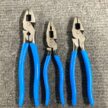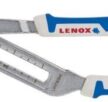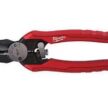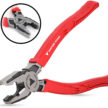Milwaukee MiUSA Lineman’s Pliers
Made in the USA and More
Milwaukee’s MiUSA lineman’s pliers are one of the first products to come out of their new West Bend, Wisconsin plant. While the made in USA feature is the one that’s getting all the attention, it was what Milwaukee has decided to do with these pliers that intrigues me most. With these pliers, Milwaukee is aiming directly at the top tier of lineman’s pliers, and in the process being almost cheeky in their competitiveness!
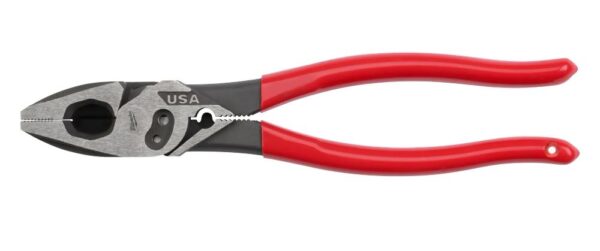
Three Tiers of Lineman’s
Lineman’s pliers, in the USA anyway, fall into three broad categories. At the top tier, in the 50-ish dollar range, are a few companies that are the favorites of professional electricians. In the middle tier, costing about half as much, are many companies that make very serviceable lineman’s for electricians and other users, both pros in other trades and DIYers. In the bottom tier are lineman ’s-style pliers costing even less that are functional for occasional use. It’s the top tier that Milwaukee’s MiUSA lineman’s pliers are taking direct aim at.
These pliers are certainly coming out of a state-of-the-art factory. Industry 4.0 is the buzzword used in describing factories of this sort. Industry 1.0 represented the leap from hand production to steam and water power. Industry 2.0 refers to the changes around the turn of the 20th century including electrification, railroad transportation, and telegraph communication. Industry 3.0 was concerned with the changes that computerization brought to manufacturing. Finally, Industry 4.0 is a term that refers to modern manufacturing encompassing advanced technologies such as broad data connectivity, cloud computing, AI, robotics, and so on.
I’ve been in these kinds of modern factories, and between all the computational power and self-correcting CNC machines, I like to say that companies can’t make a bad product. They can design a defective product, but what gets made is precisely and exactly what was designed.
Taking on the Leader
It’s no secret that Klein is one of the leading brands of electrical tools, including lineman’s, and for a good reason: they make very good tools. Their lineman’s are one of the top tier brands, with a devoted following. But they’ve always had one drawback: they are “sticky” at first, and don’t open fully of their own accord. They need to be broken in, a process that can take considerable time.
Milwaukee is promoting their MiUSA lineman’s pliers as also top quality but without the need for breaking in. I was at my local Home Depot a few weeks ago and noticed Milwaukee’s MiUSA lineman’s pliers on a retail display right next to Klein lineman’s. What caught my eye was that Milwaukee’s retail packaging allows, even encourages, you to see one handle drop to the fully open position when you grasp the other (see photos below). I thought, “Well, that’s in your face!”
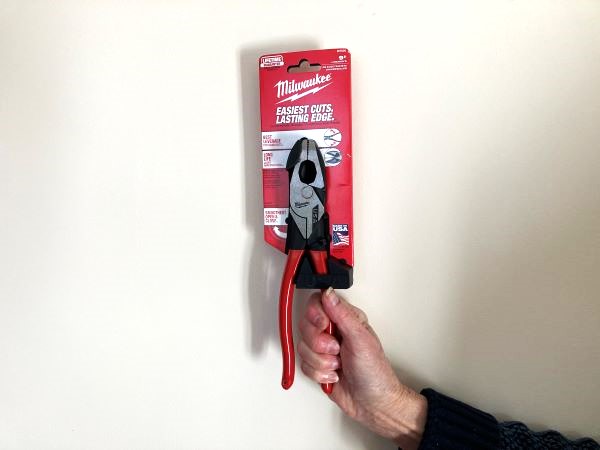
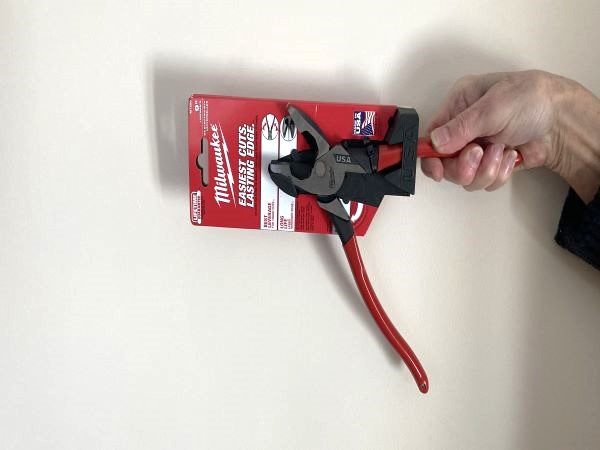
Milwaukee, of course, has widespread retail and trade-specific distribution. If their MiUSA lineman’s are indeed top quality, and they also offer significant advantages, then Milwaukee certainly has a good shot at taking market share in the top tier of lineman’s pliers.
All this caused me to ask Milwaukee if they’d provide me with a sample of the MiUSA lineman’s to evaluate, and they obliged with one of the MT500 models ($40 at The Home Depot)
Lineman’s are Used Everywhere
Lineman’s pliers were first developed for the original lineman: telegraph lineman. Telegraph wire was often 8 gauge steel, so a pretty substantial plier was necessary to work it. Then, as electrical distribution systems were deployed first in cities, and then throughout the rest of the country, lineman’s pliers were used to work with the wiring of those systems. Today they are a basic tool for every electrical worker, from lineman working on transmission lines, to electricians of all sorts working in industrial, commercial, and residential settings, to low voltage technicians working with control and alarm systems to electronics.
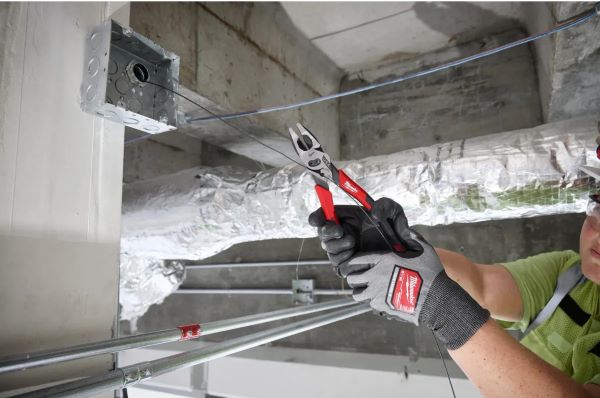
Lineman’s pliers basically grab, pull, twist, and cut metal objects. Of course, electrical workers aren’t the only tradespeople that do that. Virtually every trade now includes lineman’s pliers as part of their kit: auto mechanics, HVAC techs, metal workers…the list goes on. And I kid you not: there are even sterile, stainless steel versions of lineman’s made for surgeons! This is why there are so many manufacturers of lineman’s pliers, and why the middle tier mentioned above has so many vendors in it.
But the Milwaukee MiUSA lineman’s are aimed squarely at the top tier, so let’s take a look at that.
Specs and Features
The Milwaukee MiUSA lineman’s pliers are offered with dipped or comfort handles (at 9.22 and 9.62 inches long, respectively) and with three feature sets:
Dipped grips:
- Fish tape puller, model MT500
- Crimper and #6/8 screw cutter, model MT500C
- Thread cleaner, model MT500T
Comfort grips:
- Fish tape puller, model MT550
- Crimper and #6/8 screw cutter, model MT550C
- Thread cleaner, model MT550T
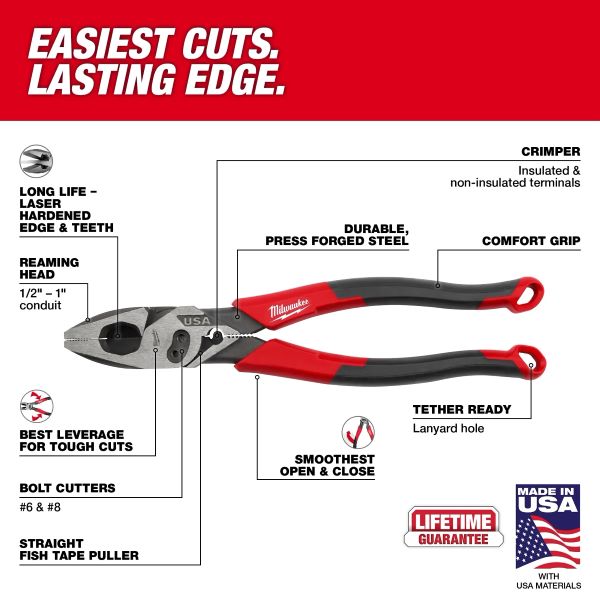
Prices range from $40 to $60, and they are available at The Home Depot and other outlets. All models feature:
- 9-inches in length
- ½-inch jaw width
- Optimized pivot point for high-leverage
- Laser-hardened edges & teeth
- Smooth open and close
- Can cut ACSR
- Press-forged steel
- Reaming head for ½-inch to 1-inch conduit
- Tether ready
- Lifetime Guarantee
- Made in USA with USA sourced materials
Details on all Milwaukee lineman’s pliers, including these MiUSA models, are on Milwaukee’s website here.
Fit and Finish
On the Milwaukee’s MiUSA lineman’s you can still see and ever-so-slightly feel the final finish machining on the not-plated jaws. This is neither here nor there in my opinion; after all, this is a tool that’s going to get beat up in short order, not as mantel ornament. The jaw gap is narrow and straight. The jaw teeth and cutting blades are sharp and without flaws. All the edges are crisp and meet other surfaces and edges perfectly. The only finish element that I wanted to modify was the sharp outer edges of the jaws – while they were crisp, they were also a bit sharp. Fifteen seconds with a stone made them more to my liking.
These are handsome yet obviously made-for-work pliers.
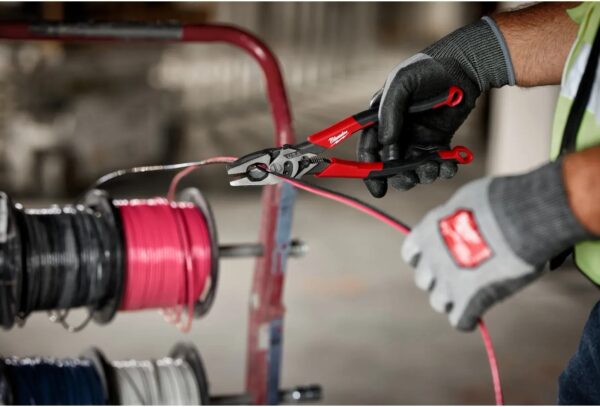
Handling
Milwaukee’s MT500 MiUSA lineman’s are balanced about where the dipped grips end. This balance point puts them pretty much in the middle of the spectrum of lineman’s pliers balance points; some are more head-heavy, while others are less so.
The balance point is important to the way the user feels the tool. To a user who prefers a balance point further back, head-heavy pliers feel like you’re fighting gravity to use the tool. To a user that likes a more head-heavy plier, one that has the balance point more aft-end doesn’t provide enough proprioceptive feedback. To my hand and in my experience, Milwaukee’s MiUSA lineman’s just about split the difference – maybe a bit to the head-heavy side.
My hands are dead-average size for an American man (which somehow means I take a size large glove) and the dipped-grip MT500s feel very comfortable in them.
The Action
As advertised, the Milwaukee’s MiUSA lineman’s that I received fell open when turned horizontal. This is important with pliers that you are using all day, every day.
Different people open a pair of pliers with slightly different techniques usually using the back of one or two fingers to open the handles (I use just the index finger, as the photo below shows). This means that they are opening the handles with the forearm extensor muscles for one or two fingers. Extensor muscles are very weak compared to the flexor muscles that let you grab and hold onto things. Using them all day long to open tight/sticky pliers gets old fast.

This effortless opening action comes with the trade-off of the slightest bit of play between the handles. This play is so small that I didn’t even notice it until I locked one handle in a vise and looked for it. From over half a century of using lineman’s pliers, I can say that this play will make no difference whatsoever in use; I doubt you’ll even know it’s there unless you go looking for it yourself. If Milwaukee got the metallurgy right (see discussion below) it’ll always be a non-issue. It’s the right trade-off.
Grab/pull/twist/cut
Lineman’s pliers are designed to grab, pull, twist, and cut metal things. So how do Milwaukee’s MiUSA lineman’s do here?
Milwaukee rates these pliers as ACSR capable. The 500T and 550T variations are, by virtue of the thread cleaner, targeted more at actual linemen, and ACSR is something that they deal with much more than most electricians. As a substitute, I tried the M500s on something that electricians do run into a lot: stray nails that need snipping. For a tough case, I used a 16d sinker, and the M500 cut through it as easily as other top-tier lineman’s and more easily than some.

The jaws of these lineman’s are aggressive and sharp for grabbing, pulling, and holding. To try that out, I locked some old-school steel fish tape in a vise and grabbed onto the tape with the jaws. Leaning all the way back, and using my leg up on the vise for additional force, I could not get the jaws to slip (my grip strength would have been the limiting factor).

My sample pliers cut 14/2 and 12/2 romex with no problem as expected, and subjectively required pretty much the same force as several other top-tier and mid-tier lineman’s that I have here of the same length.
I measure the Milwaukee’s MiUSA lineman’s jaws at ½-inch wide. This is almost as wide as I’ve seen and wider than many. Wide is good here in my opinion, because it lets you grab a bunch of wires all at once without having to fuss over getting them lined up just right. These pliers grabbed onto four strands of bare 12 gauge and twisted them easily, with no stop-and-reset required. The easy-opening action was a benefit here; I didn’t have to fight the action to get the jaws open and in place.

Finally, remember that I said these lineman’s tilt just a bit head-heavy? Well, I know you’re curious, and the answer is yes, they do make a good makeshift hammer!

Milwaukee MiUSA Screwdrivers
Milwaukee also sent along their new 6-piece MiUSA screwdriver set (model MT-200-6) which includes the most popular driver sizes (Milwaukee makes more sizes, too). I’d only intended to use them for the photograph above, but I was so impressed that I’ll spend a few words describing them here.
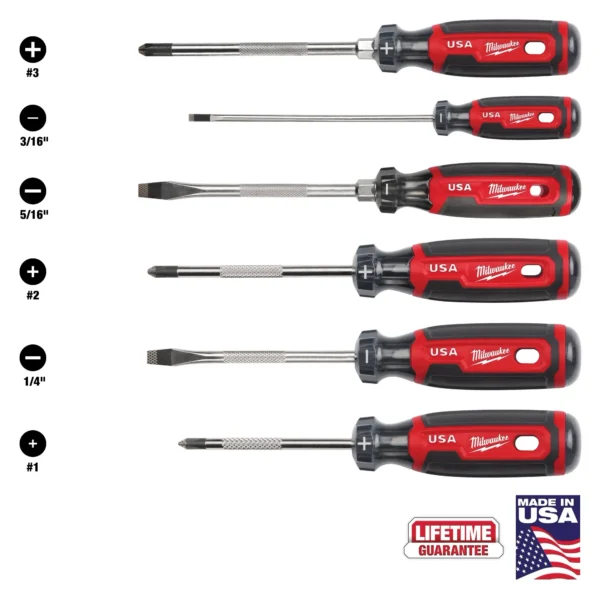
The basic specs and features:
- Precise driver/fastener fit
- Laser etched anti-slip tip
- High strength boron-infused steel
- Comfortable, dual material handle
- Visible ID markings on caps
- Knurled shank (select models)
- Wrench-ready bolster (select models)
- Cabinet, Phillips, and slotted tips
- Available shank lengths of 3-inch to 6-inch
- Lifetime guarantee
- Made in USA with USA sourced materials
These are quality screwdrivers – you can feel it. They have a rugged, tough, beefy, quality feel in the hand. The dual-material handles are both comfortable and grabby when you want high torque. They are not full-tang, which is an advantage to those of us who do electrical work, but the caps are hard and resilient. The precision tip sizing, and the laser-etching, are hallmarks of top-tier screwdrivers these days.
But all of that, impressive as it is, isn’t what struck me the most. What struck me the most about these screwdrivers is how well the shank and handle diameter is matched to the task that particular size driver is envisioned for. The #3 Phillips and the 5/16 slot screwdrivers are both beefy and hand-filling, as befits the fasteners they will be working. But the 3/16 cabinet-tip screwdriver, the classic electrician’s screwdriver used mainly for low-force 6/8-32 spinning, is sleek and precise. This matching of the handle and shank size to the intended use of the tool so well is a step above many screwdrivers on the market.
Bottom Line
Milwaukee’s MiUSA lineman’s are a serious entrant into the top tier of lineman’s pliers. They perform well and have the significant advantage of an easy, smooth action. I can’t tell you how long they’ll last or how long the cutters will stay sharp (I’d have to use them for decades to do that, but the blades are laser-hardened). But if Milwaukee got the metallurgy and the heat treatment right it’ll be a long time, and we’ll have a new contender.



